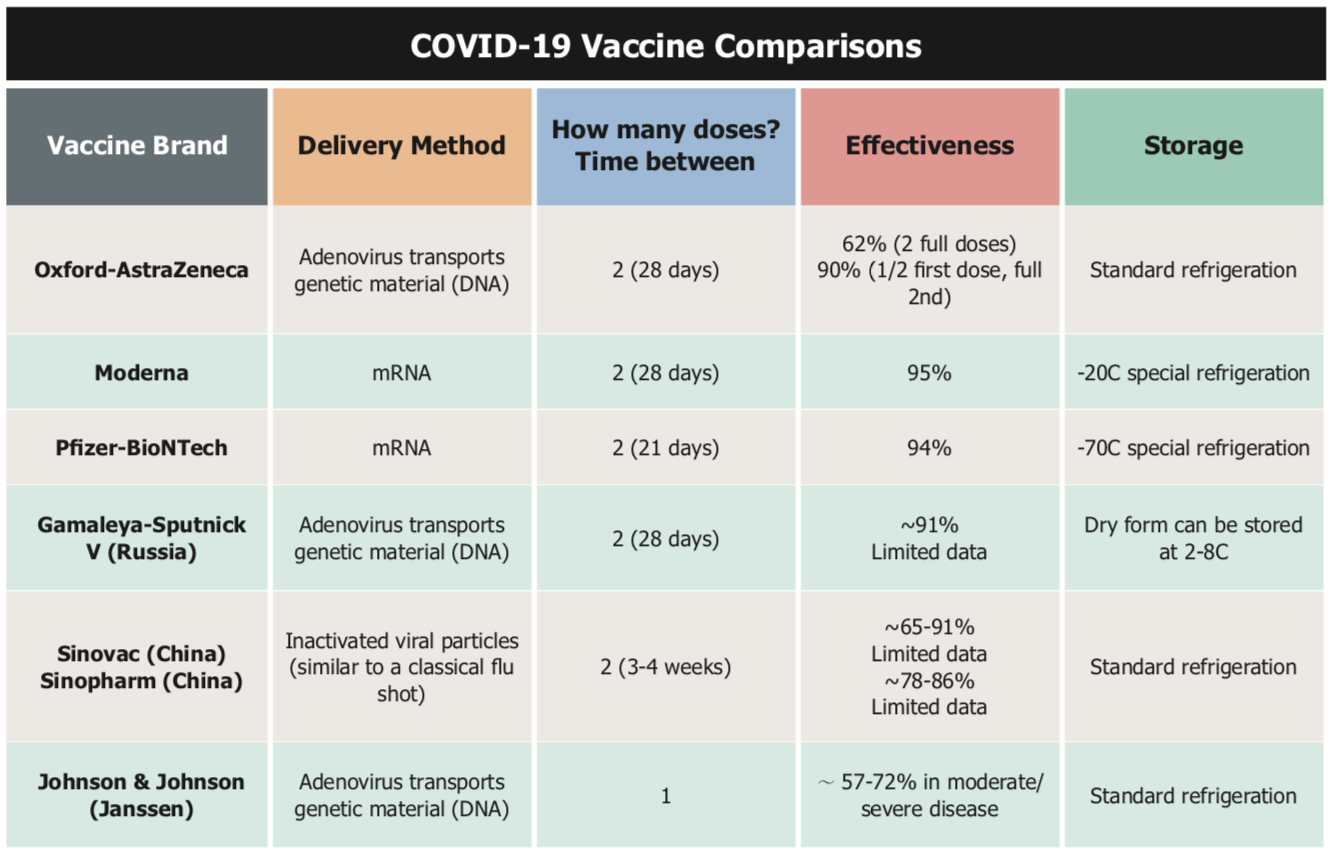With several vaccines already in the market and dozens more in development around the world, there are many questions about the ever-changing state of the vaccine market and how it will develop in the future.
By Helen Zhang, Director of Pharmacy & the Immunization Network Leader for United Family Healthcare
As the Director of Pharmacy & the Immunization Network Leader for United Family Healthcare, the big question I keep hearing is “Can we trust these vaccines that have been developed at pandemic speed?” Thankfully, I have an easy, evidence-based answer: yes, we can!
While we do not yet have proven treatment methods to handle this horrific virus, we do have a few proven, effective, and safe vaccines, thanks to a monumental global effort. Despite warp speed development and the need for emergency or conditional approval for these vaccines, all of the vaccines that have received approval have already been subject to very rigorous trials and the results are looking very positive. Of course, it’s still critical to continue with post-administration surveillance and testing so that we fully understand the efficacy and longer-term impact of these vaccines, but testing to date gives us reason to be very optimistic.
Where are we with vaccine development globally?
As of March 12, there are 81 vaccines in clinical development and 182 in pre-clinical development globally. Thus far, we have four types of vaccine technology that are being employed by the major players, who have either had vaccines approved for distribution or expect to do so soon: 1) the Inactivated Virus-based Sinopharm and Sinovac vaccines, which have been approved in China and tested both in China and elsewhere; 2) the Messenger RNA (mRNA)-based Pfizer-BioNTech and Moderna vaccines approved for emergency use in the US and the UK, and the pending mRNA BioNTech-Fosun vaccine that is being rolled out in Hong Kong and will likely soon be available in Greater China; 3) the Viral Vectored vaccines produced by AstraZeneca-Oxford, Cansino, and Janssen (Johnson & Johnson); 4) and the Protein Subunit-based vaccines developed by Novavax/Sanofi-GSK/Anhui, which are still in Phase 3 trials and yet to be approved.
Among these leaders, efficacy rates are, so far, highest among the mRNA vaccines and the Viral Vectored vaccines, with the Pfizer-BioNTech vaccine and Moderna vaccines showing 95% and 94% efficacy, respectively, AstraZeneca-Oxford showing 90% efficacy when a half dose is followed by a full dose, Cansino showing between 65-95%, and Janssen showing 74% efficacy within the US trial population. Still, experts agree that we shouldn’t get too hung up on comparing these trials because they used different population groups to measure efficacy and they were conducted at different times (notably, for example, the Janssen trials were conducted after new variants had already emerged).

The important take away from these trials is this: all of these are highly efficacious vaccines, boasting efficacy rates much higher than that of the common flu vaccine, which ranges between 40-60% (and that’s when the most circulating flu viruses are well-matched to the flu vaccine, which isn’t always the case). So, what the global scientific community has achieved at pandemic speed is actually quite remarkable!
The other big question we get is some variation on “How will being vaccinated make me feel?”, “Is it risky?”, or “What are the side effects?”. Here, again, we have good news. The side effects experienced by the vast majority of people who have been vaccinated thus far are minimal and in line with those we would see with other common vaccines: fatigue, soreness at the injection site, muscle ache, sometimes a fever. None of these symptoms are outside the norm of what we would expect from a vaccine of this nature.
Where does China fit into the picture?
China has been an important leader in this effort, developing several of the earliest vaccines to reach Phase 3 trials and to receive approval. As of March, over 70 million doses – mostly of the Inactivated Virus vaccines that require two doses 14-28 days apart – have been administered to frontline workers and healthy adults between the ages of 18-59 in China. The government is footing the bill for vaccines in China, but so far people don’t have a choice as to which vaccine they receive. The Fosun-BioNTech vaccine, which is already being administered in Hong Kong, will likely be submitted to the China Food and Drug Administration for approval in March, opening up more options for use in China.
There are some restrictions to be aware of in China. For now, pregnant women, children, and people over the age of 60 are generally excluded from local vaccination efforts (while some communities have started to administer to those over the age of 60, this is still uncommon). People with pre-existing conditions, such as hypertension, diabetes, and thyroid diseases need to first have their diseases in control before vaccination, and women who are pregnant or breast-feeding will not be vaccinated for now. People with cancer, neurologic disease, or severe allergies will not be vaccinated. Those who have received the vaccine should wait three months to get pregnant and should wait 28 days before getting another vaccine, such as the flu vaccine, HPV, or others.
Where do we go from here?
Our goal is herd immunity and, ultimately, elimination of the virus. In the short term, attaining herd immunity is critical, as it will prevent the virus from getting out of control and it will protect the more vulnerable among us who are unable to get vaccinated. There, of course, remain challenges – variants are emerging that will require us to adapt our vaccines, there is considerable vaccine hesitancy among some populations that we must address, and we do not yet know how long our current vaccines will remain effective. What we must stay focused on right now is getting a lot of people vaccinated quickly. If we do this, we can achieve herd immunity and actually eliminate this virus from the world.
We must keep battling, keep educating, keep working to eliminate this virus, and I truly believe we will do so if we all do our part. Please do your part and get vaccinated as soon as you are eligible!
This article is featured in our Quarterly Magazine. Access the full issue in the Publications tab after logging into our member portal here.

